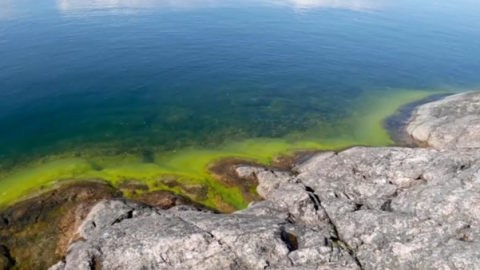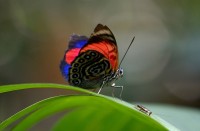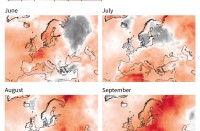
VARMDO, Sweden (Reuters) — Swedish wetlands near the capital Stockholm are being kept saturated for longer to increase the numbers of pike coming to spawn in warm, sheltered waters in the spring.
The pike “factory” not only helps restore biodiversity in the wetland, it also helps reduce algal bloom in the Baltic Sea as increased numbers of the predator allow smaller organisms to eat the algal bloom.
The conservation effort began in 2013, with shrubs being cleared and a dam built to keep water there for up to three months of the year.
Wildlife like birds, fish, frogs and toads were scarce and the numbers of pike had fallen to 60. Now, anglers and conservationists have installed a corral to monitor numbers of pike migrating through the wetlands on their way to the Baltic Sea.
The latest monitoring shows several pike migrating through the wetland each day, with numbers peaking at between 60 and 70 each day.
The pike are caught in the corral and then measured and weighed, the sex determined and their cheeks, which have a unique coloring, are photographed so that they can be recognized if and when they come back. They are then released into the wetlands.
Oscar Olseryd from the Swedish Anglers Association said adult pike spawn in sheltered areas like the wetlands because their roe survives better on vegetation than on the wetland bed where they can be covered with sediment.
“In 2014 there was a total number of 62 fish that reached these spawning grounds and in the coming years, like last year they, saw a lot of small pike that came out of the wetlands and into the archipelago and now in 2017 there has been 350 pikes that have come up here to spawn and the biggest fish they are, well they are huge. It’s fish about 10 kilos – almost as long as I’m tall, basically,” said Olseryd.
Eutrophication – the enrichment of nutrients in an ecosystem – is a huge problem in the Baltic Sea. Excessive amounts of nutrients encourage the growth of algae and other aquatic plants resulting in algal blooms and oxygen depletion on the seabed, with serious effects on sealife on the seabed, according to the World Wide Fund for Nature’s Tom Arnbom.
“There are lots of farmland and they use fertilizers to increase the crops – and that is phosphorus and nitrogen – and that goes into the Baltic, it flows out when it’s raining, it goes out and there is no cleaning up, and that increases algae blooms and there are so many algae when they die they go down to the bottom, they kill the bottoms. They need oxygen to decompose the algae so we have vast areas of dead bottoms in the Baltic,” said Arnbom.
He described the pike as a tool to help stop algal bloom in the Baltic because zooplankton populations can expand.
“They eat the fish which are the ones who really eat the zooplankton which means that eutrophication can then disappear because the zooplankton is the one keeping the eutrophication down,” he said.
The project has attracted attention from other Swedish councils and landowners as well as angling associations worldwide that want to restore wetlands for both fishing and conservation.







